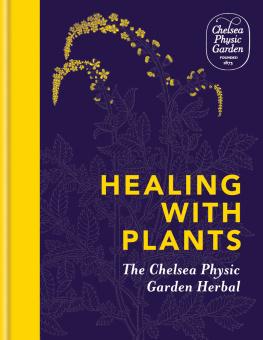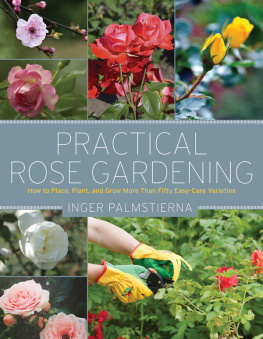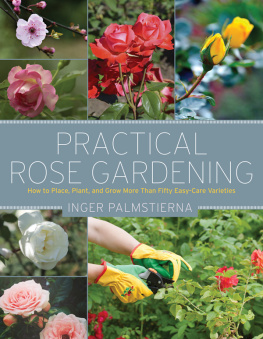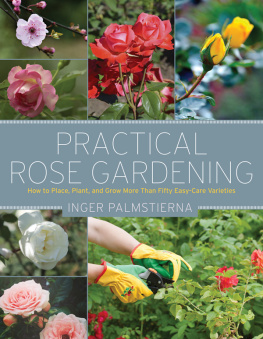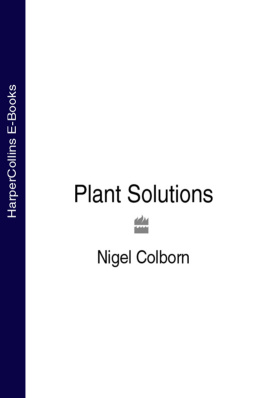ROSES
Love
GARLIC
COMPANION
PLANTING AND
OTHER SECRETS
OF FLOWERS
LOUISE RIOTTE

The mission of Storey Publishing is to serve our customers by
publishing practical information that encourages
personal independence in harmony with the environment.
Edited by Julia Needham and Deborah Burns
Cover design by Meredith Maker
Cover illustration by Linda Devito Soltis
Text design by Cynthia N. McFarland
Text production by Eileen M. Clawson
Line drawings by the author
Indexed by Susan Olason, Indexes & Knowledge Maps
1983, 1998 by Storey Publishing, LLC
Cover illustration Linda Devito Soltis
All rights reserved. No part of this book may be reproduced without written permission from the publisher, except by a reviewer who may quote brief passages or reproduce illustrations in a review with appropriate credits; nor may any part of this book be reproduced, stored in a retrieval system, or transmitted in any form or by any means electronic, mechanical, photocopying, recording, or other without written permission from the publisher.
The information in this book is true and complete to the best of our knowledge. All recommendations are made without guarantee on the part of the author or Storey Publishing. The author and publisher disclaim any liability in connection with the use of this information. For additional information please contact Storey Publishing, 210 MASS MoCA Way, North Adams, MA 01247.
Storey books are available for special premium and promotional uses and for customized editions. For further information, please call 1-800-793-9396.
Printed in the United States by Versa Press
20 19 18 17 16
Library of Congress Cataloging-in-Publication Data
Riotte, Louise.
Roses love garlic : companion planting and other secrets of flowers / Louise Riotte. [2nd ed.]
p. cm.
Includes bibliographical references (p. ) and index.
ISBN 978-1-58017-028-4 (pbk. : alk. paper)
1. Companion planting. 2. Organic gardening. 3. Companion crops.
4. Plants, Useful. I. Title.
SB453.6.R56 1998
635dc21
97-42029
CIP
The Wide World of Flowers
Flowers, from wildflowers to the finest cultivars, are beloved in every part of the world. Most are used as decorations, but many are also used for medicinal purposes, or to help other flowers grow or resist disease. What is a flower? The word may mean either the blossom or the whole plant. Botanists use the word flower to mean only the blossom of a plant. They call the whole plant blossom, stem, leaves, and roots a flowering plant. Any plant that produces some sort of flowers, even a tiny, colorless one, is a flowering plant. Thus, grasses, roses, lilies, apple trees, and oaks are all flowering plants.
Herbaceous (nonwoody) flowering plants are generally classified by the length of time that the plant normally lives. Annuals live only one year. Biennials live for two years, blooming well only the second year. Perennials live for more than two years; they bloom the year after they are planted. Woody flowering plants trees and shrubs usually live for a number of years.
By any definition, flowers and flowering plants are essential to life on earth. We depend on them for our food. Flowering plants include almost all of our grains, fruits, and vegetables. We eat the roots of beets and carrots, the leaves of lettuce, the seeds of beans and peas, the fruits of apples and peaches, and the young stems of asparagus, all of which are parts of blooming plants. And artichokes, broccoli, and cauliflower are undeveloped flower clusters. Even the animals that we eat cattle, sheep, and hogs live on flowering plants.
We have learned many different ways in which to use plants. Dandelion and elderberry blossoms are used to make wine. Cloves, the flower buds of the tropical clove tree, are used to flavor many foods. Pickled flower buds of the caper bush are used as a relish.
Many flowers are known by their scent, which may range from pleasant to unpleasant, from the delightful fragrance of the rose to the reek of the pelican flower of South America, which smells like carrion. Scent, whether appealing to humans or not, is a key way that flowers attract pollinators.
Most flowers need soil to grow, but some can grow on tree branches, taking their sustenance from the air, while others float on lakes and streams. Even hot, dry deserts have many lovely blossoms. During and after the rainy season, they spring up as if by magic to bloom quickly and set seed so another generation will be there to rise again when the season is right. Just about the only places flowers do not grow are in the ice-covered parts of the Arctic and Antarctic.
Some water blossoms are so small they can be seen only under a microscope; others, like the giant rafflesia, the largest flower in the world, which grows wild in Malaya and Indonesia, may measure three feet across!
A fascinating aspect of flowering plants, and one with practical value to the gardener, is how the different kinds interact when planted together. This is a subject that we will be looking at closely in this book.
Companion Flowers
Companion planting is not a form of magic. It is simple and practical, making use of known factors in planning a flower or vegetable garden. Companion plantings of some kind have been practiced throughout most of agricultural history.
Early settlers from Europe found the Native Americans planting corn and pumpkins together. In Holland in the 1800s a border of hemp (cannabis) was often planted around a cabbage field to keep away the white cabbage butterflies. Nature herself grows many different kinds of plants successfully as companions. Furthermore, her plants, in most instances, grow very closely together. Instead of isolating particular kinds or varieties, she often places them shoulder to shoulder. Thus they become a source of needed shade, a climbing support, or a provider of mulch and soil-conditioning food. They may even repel other plants, preventing a sturdy, too-aggressive species from completely taking over.
Legumes such as clover and alfalfa have long been used as companion crops by farmers who have grown them to add nitrogen to the soil. The nitrogen fixed by legumes and other plants is not immediately available to neighboring plants but is released when the legume, or a portion of it, dies and becomes incorporated in the soil. In the flower garden lupines and other plants belonging to the Bean family perform the same function.
Some companion plants offer mechanical benefits; roots of large plants may break up the soil for smaller ones and make root penetration easier, especially in tight soil. Deep taproots of dandelions and other plants bring up minerals and make them available to plants growing nearer the surface.
Large plants (hollyhocks, sunflowers) may provide shade, wind protection, or higher humidity for small plants near them. In nature, shrubs growing around the trunk of a tree may protect it from animals. At the same time the tree, because of the shade it provides, protects the shrubs from being overwhelmed by weeds.
Another key to companion planting is controlled competition. A gardener growing a perennial flower border is engaging in one of the most complex forms of companion planting. The garden is designed not only for color, texture, height, and bloom sequence but also for controlled competition through proper spacing and varying heights. Smaller plants are protected by larger ones, but thought must also be given to the aggressive plants that will crowd out slower-growing ones if they are not kept within bounds.


